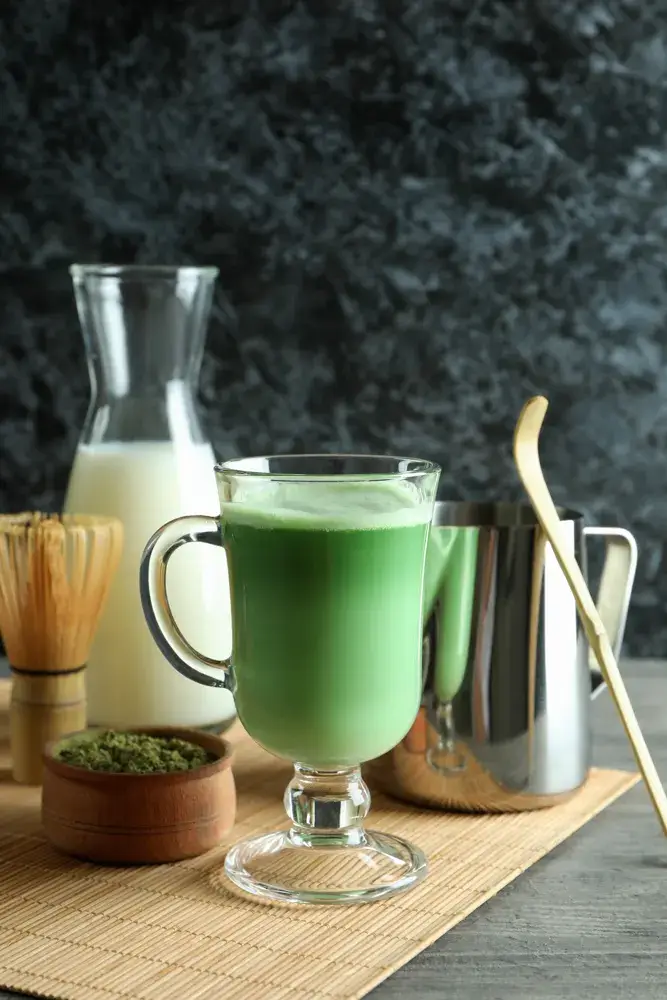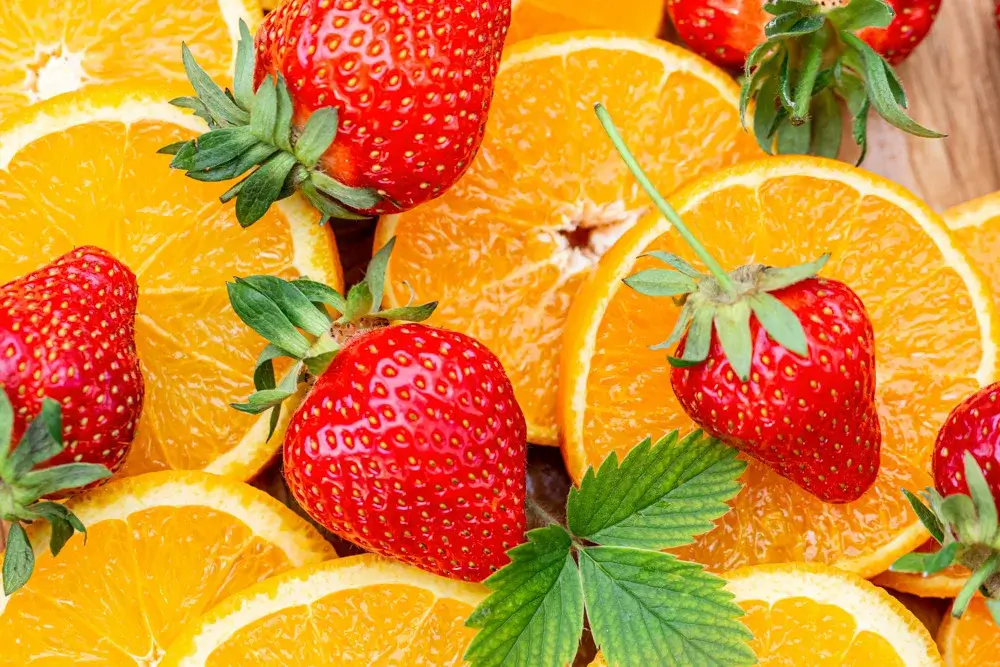The Powerful Benefits of Matcha: More Than Just a Trend

Everybody and their mother is on the matcha wellness trend. And for good reason. There are reasons Matcha is currently stealing the wellness spotlight. From smoothie bowls to lattes to your favorite coffee shop to morning rituals. Matcha is everywhere.
Not just because it is so Instagram-worthy, no, no it is much deeper than that. This is a centuries-old superfood that modern wellness lovers are finally embracing. Nutritionists, wellness experts, and even skincare gurus are raving nonstop about matcha.
But why?
Matcha isn’t just any trendy green drink, it is an ancient go-to drink when it comes to nutrition, health, and wellness. People have used it for centuries, and we can date it back to the Tang Dynasty in China, then it made its way to Japan, becoming a staple, especially in Zen Buddhist rituals.

No Matcha is NOT Powdered Green Tea
A common misconception is that matcha is just powdered green tea because it comes from the same Camellia sinensia plant. This couldn’t be far from the truth. It’s grown and processed differently, giving it that rich umami flavor and vibrant green color.
With Matcha, the tea plant is shaded for weeks before harvest, increasing its chlorophyll and amino acid content. The leaves are then handpicked, de-stemmed, dried, and crushed into a matcha powder.
In this article, we want to give you a bit more than the typical “why matcha is good for you” lists. We’ll explore why it stands out from regular green tea, break down its nutritional benefits, how it supercharges your brain and body, and why it could be the best upgrade to your daily routine.

Why is Matcha Special Beyond Regular Green Tea?
Okay, so now we know that matcha is amazing for you, but let’s try to break it down and see why exactly it is.
Higher antioxidant concentration
Matcha has a couple of antioxidants that are super beneficial to us. Two main ones that are pretty much show-stoppers are catechins and epigallocatechin gallate (EGCG).
EGCG is beneficial because not only does it fight inflammation and boost metabolism, but it also supports heart health. Matcha impressively has up to 137 times more EGCG than regular green tea, and that speaks for itself.

Unique amino acid profile
To make it all better, matcha has L-theanine, an amino acid that helps you have calm focus and steady energy. When it comes to coffee, you really have to expect the rollercoaster that comes with it and the eventual crash. But with matcha, it’s all about the smooth and sustained buzz.
Chlorophyll & detox properties
The reason matcha has that vibrant, bold green color that makes it so Instagram-worthy is its high chlorophyll content. It is a natural detoxifier, meaning it flushes out all heavy metals and toxins in your body.

Benefits of Matcha
1. Energy – Matcha Compared to Coffee
| Factor | Matcha | Coffee |
| Caffeine amount | 30-70 mg per cup | 80-150 mg per cup |
| Energy Effect | Smooth, sustained energy | Quick spike, then crash |
| Jitters & Anxiety | Low (due to L-theanine) | High |
| L-Theanine amount | High | None |
| Hydration | Less dehydrating | Can cause dehydration |
Coffee will tend to give you a fast energy spike, but it will most likely cause jitters and an eventual crash. Matcha has caffeine, and it also has L-theanine, which will balance out the effect of caffeine. As a result, you’ll get more sustained and steady energy with zero jitters.
2. Metabolism & Weight Loss
Matcha can also contribute to increasing your metabolism and eventually can help with weight loss. The EGCG helps to increase thermogenesis as well as fat oxidation, both of which are really good for metabolism.
This makes matcha a particularly effective fat burner and much better than other artificial burners.
No food or drink can melt away fat, especially belly fat, but according to one study, catechins can reduce visceral fat when paired with regular exercises.
RELATED ARTICLE: BEST SUPPLEMENTS FOR FAT LOSS

3. Skin Benefits
I know, I know, it’s hard to believe, but matcha has a ton of skin benefits. That’s why skin gurus are on it. EGCG can fight oxidative stress, which is a good thing because it speeds up aging. In addition to this, EGCG also neutralizes free radicals, leaving your skin firm and, yes, glowing!
Matcha is also a natural remedy for acne because of its anti-inflammatory and antibacterial properties.
Matcha is perfect because you can easily create your own DIY face masks to help with your skin issues.
4. Cortisol & Stress Levels
Coffee spikes your cortisol level, leading to an increase in stress and anxiety. However, studies show that L-theanine, which is abundant in matcha, can prevent stress-induced spikes in cortisol, and this helps you stay calm and relaxed even when under pressure.
For stress management, drink matcha in the morning or early afternoons. To prevent sleep disruption, try to avoid it in late evenings.
Check out more Helpful Content on Cortisol and Stress Management

5. Gut Health & Digestion
Taking matcha is great for gut health and even better digestion. This is because polyphenols usually act as prebiotics that feed gut microbes and catechins.
In addition to this, matcha also has anti-inflammatory and mild diuretic properties that help reduce bloating.
Try mixing your matcha tea with ginger, lemon, or mint for even better gut health benefits.
RELATED: GUT HEALING FOODS AND HABITS

6. Mental Clarity and Focus
Matcha has caffeine and L-theanine that work together to enhance your focus, mental clarity, and cognitive function, all without jitters and crashes.
7. Hormonal Balance & Women’s Health
To all the ladies who need this, matcha is the answer to PCOS and hormone imbalances. It facilitates healthy levels of estrogen in addition to reducing oxidative stress.
The L-Theanine also helps you stay calm and relaxed, relieving mood swings and PMS symptoms.
To have an even better effect on hormone imbalance issues, focus on hormone-balancing foods such as healthy fats and adaptogens in addition to matcha.

8. Boost Immunity
As an antioxidant and being particularly rich in vitamins and catechins, Matcha enhances the body’s immunity.
Additionally, matcha has antibacterial and antiviral traits, which work hand in hand to keep you healthy.

MORE YOU’LL LOVE
Immune-Boosting Foods: The Best Foods To Strengthen Your Immunity
Looking to level up your wellness routine? Check out these powerful immune-boosting foods that pair perfectly with your daily matcha ritual.
9. Detoxifying Benefits of Matcha
Matcha has a higher amount of chlorophyll due to its growth and harvesting process. This helps detox your body because it flushes out heavy metals and toxins.
10. Heart Health
The catechins that are found in matcha can help improve heart health. It does this by lowering LDL, which is the harmful cholesterol. In addition to this, it also reduces blood pressure and improves circulation.

How to Make Matcha Tea At Home
Making matcha at home is super simple. With just a few easy steps, you can have a cup of smooth, frothy, antioxidant-packed heaven. Here’s a simple recipe with expert tips to ensure you get the perfect matcha cup every single time.
Ingredients You Need
- 1 to 2 teaspoons of matcha green tea powder. If you want the best flavor, I’d suggest the ceremonial grade.
- 2 ounces of hot water. This should be around 175°F or 80°C
- Sweetener (optional). For example, honey, maple syrup, or stevia. Milk is perfect for lattes.

Instructions:
- The first step is to sift the Matcha. Simply sift 1 to 2 teaspoons of matcha powder into a bowl or a mug. This will ensure any clumps are broken down, leaving a smooth texture for your final drink.
- Next, add hot water to the sifted matcha powder. You’ll need approximately 2 ounces of hot water, but make sure that it isn’t boiling. If the temperature is too high, you risk making the tea bitter, and we don’t want that.
- Once done, whisk vigorously in a zigzag, and use a bamboo whisk(chasen). Do this until it becomes frothy and well combined. It’s important because the technique will help aerate the tea and create a creamy texture.
- You’re free to adjust consistency. So if you like your tea a bit thinner, add more hot water but stay under 6 ounces. If a matcha latte is what you’re up for, add some steamed milk.
- Finally, you can sweeten to taste by adding any form of sweetener to your matcha. For example, honey, maple syrup, or anything else you like. Stir well and enjoy your cup of matcha goodness.

How To Get the Most Out of Your Matcha Tea
With all the incredible benefits listed and the perfect matcha recipe right here, the next question is about optimization, right?
So, which one should you buy, ceremonial grade or culinary grade?
Well, for your day-to-day cup of matcha, ceremonial grade is the best. It has a smoother taste and retains most nutrients. You can use the culinary grade for baking or lattes because of its more bitter taste.
When it comes to the best way to prepare your matcha to get maximum benefits, it depends. For a pleasant traditional experience, whisk your matcha with hot water to ensure all nutrients are retained.
A cold-brew matcha is a good alternative that retains even more antioxidants. To boost absorption, you can add healthy fats like coconut milk.
When it comes to what to avoid, make sure you stay away from sugar and any artificial flavors. Natural sweeteners like honey are all you need.

Final Thoughts
Matcha is much more than some fancy trend. It’s fantastic for the health and wellness of your body and mind. From boosting your metabolism to amazing skin benefits to better gut health to increased focus, matcha is, simply put, a game changer.
It should be a non-negotiable part of your wellness routine. You can’t afford to miss on all its benefits.